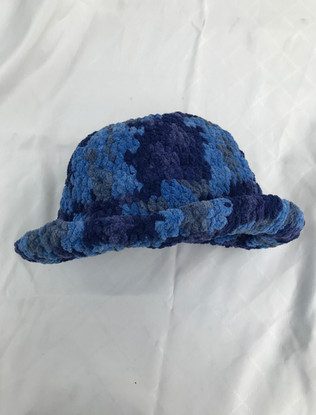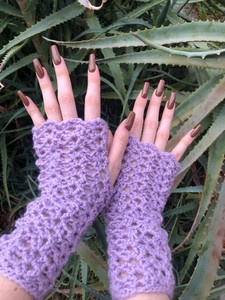
It’s been over 300 days since quarantine began. That’s 11 months since we’ve been cooped up at home. For many, hobbies helped subdue the intense feelings of isolation and boredom brought about by COVID-19 restrictions. Early quarantine saw whipped coffee and homemade bread rise in popularity, while in later months, Americans gravitated towards rug-making and Bob Ross painting tutorials.
Most of these crafting crazes exposed the country to quirky activities unbeknownst to us pre-pandemic, so it was a shock when the already well-known hobby of crocheting became a new trend. Crocheting, the less popular sister of knitting, has always been seen as an antiquated skill. An activity once revered by upper-class Victorian women became an “old lady” practice in the 21st century. The fall of crocheting can be traced back to two things: its association with outdated gender roles and modern consumerism. Crocheting and feminism have long had a rocky relationship. Crocheting, like cooking and sewing, was once expected of domestic women, so when feminist movements emerged in the late 1900s, these crafts became symbols of the societal roles that women were trying to escape. The industrialization of the clothing industry also aided in destroying public interest in crocheting. With pre-made clothing easily accessible in stores, fewer women needed to make clothes, so fewer women felt pressured to learn how to sew and crochet.
So why is crocheting becoming popular again with younger generations? The teenagers of today are redefining what it means to crochet. Rather than crocheting to solidify their femininity and worthiness of marriage, these kids are using crochet to adapt to the mental stress of online learning and quarantine cabin fever. It’s no surprise that students at Eagle Rock High School are taking part in innovating the art of crochet. Paloma Bondi, a senior at ERHS, is one of many students who taught themselves how to crochet during quarantine. Bondi had dabbled with knitting since she was little, but it wasn’t until the pandemic hit that she began crocheting. “I was scared that it would be complex and difficult, but instead it was super fun and simple,” she said while showing off the intricate hats and bags she had finished. “Crocheting helps me express my creativity, and it gives me something to do when watching a show.”
Another student, Maggie Beal, has mastered multiple hobbies in the past few months. She’s been making stone rings, sewing her own clothing, and most recently crocheting. Maggie attributes social media to the reemerging popularity of crocheting. She says that it was the crochet bucket hat trend on Tiktok that inspired her to learn the craft.
For some, crocheting has escaped the realm of leisurely hobbies and become a business. An ambitious Raesa Martin started crocheting in early April after gaining inspiration from a Grey's Anatomy episode. Martin says that she “ordered a needle and yarn and made a scarf in like a day and was super obsessed.” But as much as crocheting was a fun stress reliever, the cost of yarn was too much for Raesa to sustain. Martin was inspired to shift her hobby into a crocheting business for extra funds. She described the gradual growth of her business by saying, “I started asking my friends and people on my spam [Instagram] if they would buy blankets, so I started selling blankets. Then, the next thing I did was tops… then I did bags, and then everyone was saying make an account, so I did. I started taking custom orders and learning how to make crochet plushies.”
The youth of today have revolutionized the age-old skill of crocheting. The hobby was once a symbol of being forced to adhere to restrictive gender norms, but these Eagle Rock High School students have developed their interest in crocheting on their own terms. Rather than being forced to learn how to crochet for the satisfaction of a patriarchal society, these teenagers chose to explore the art of crocheting for themselves.















Comentarios